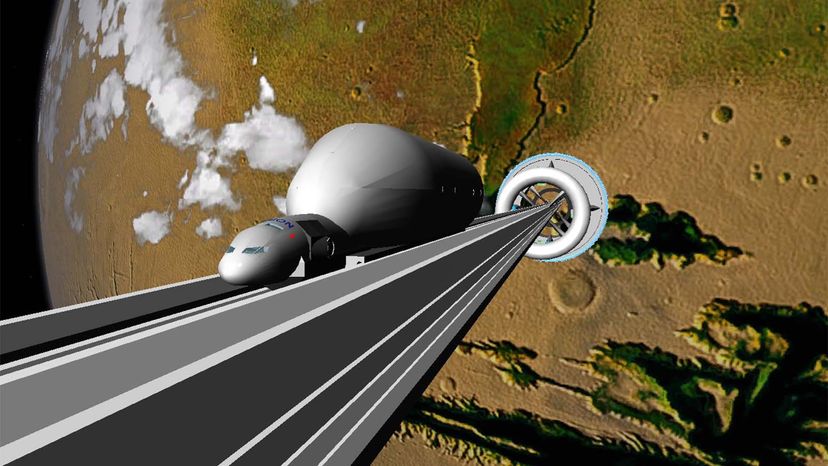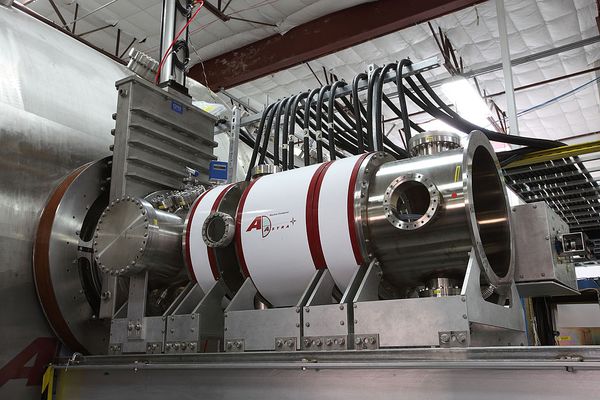Several other, even more exotic, concepts still remain on the drawing board. James R. Powell, the co-inventor back in the mid-1960s of superconducting maglev propulsion for trains, and engineering colleague George Maise, have been advocating for years that the technology be used for launching spacecraft as well.
Instead of a launching pad, the Startram Project would use a massive elevated launch tube. "Think of a magnetically levitated (maglev) train in a vacuum tunnel," Powell explains via email. "With no air drag slowing the vehicle down, and with no need to carry large amounts of onboard propellant (as is the case with rockets), it is relatively easy to reach orbital velocities of 18,000 miles per hour (2,900 kilometers per hour) or greater. When the vehicle exits the tunnel at high altitude (for example, at the summit of a high mountain), the vehicle would be going so fast that it basically coasts up to orbital altitude, where a small rocket is used to circularize the orbit. We have also designed several mechanisms to keep the vacuum in the tunnel intact when the vehicle exits the tunnel, so that tunnel can be quickly reused to launch the next vehicle. All the major components of the StarTram system exist already and are well understood."
Powell first started contemplating the use of superconducting maglev for launching spacecraft at the suggestion of a colleague from NASA in 1992. Initially, he and Maise developed a concept for a $100 billion system suitable for manned space launches, in which a tube would be levitated with massive superconducting cables. (Here's a patent they were granted in 2001 for that system.) They also designed a scaled-down, cargo-only tube system that would stretch for 62 miles (100 kilometers) and climb at least 13,123 feet (4,000 meters) up the slope of a tall mountain. They estimate that the cargo-only system could be built for $20 billion, less than the cost of developing NASA's new heavy-launch rocket.
But once built, Startram could transport 100,000 tons (90,718 metric tons) of cargo into space each year, many times what rocket launches currently carry, and put equipment into low-Earth orbit for a cost of about $50 a pound (0.45 kilograms), Powell says. That would be a fraction of the thousands of dollars per pound that it currently costs to space cargo, according to this 2018 Bloomberg article.
"The biggest technical challenge is the exit window of the launch tube," Powell explains. "The tube must remain in vacuum, so when the vehicle exits the launch tube during launch, we must prevent the in-rush of air from the atmosphere." Startram would keep the air out by using steam jets to lower air pressure outside the exit and employing a magnetohydrodynamic window, which would use a strong magnetic field to move air away continuously.


